WARNING: This article contains graphic images that some may find disturbing.
Late on the night of December 17, another American infantry unit moved into the Elsenborn area. The veteran 1st Infantry Division’s 26th Infantry Regiment moved into the area just southwest of Krinkelt at a little village called Dom Butgenbach. Their placement at the small village would prove to be vital over the coming days. The new arrivals had heard the rumors (which were not rumors at all) about American soldiers throwing down their weapons in the face of furious German assaults and surrendering or running away. The 26th’s commanding officer promptly put an end to any ideas of doing that when he told his subordinates, “We fight and die here.” With those words, the 26th dug in on the reverse slopes of the hills, established road blocks all around the village, and tied in with their veteran brothers of the 38th Infantry Regiment still holding tight in Krinkelt.
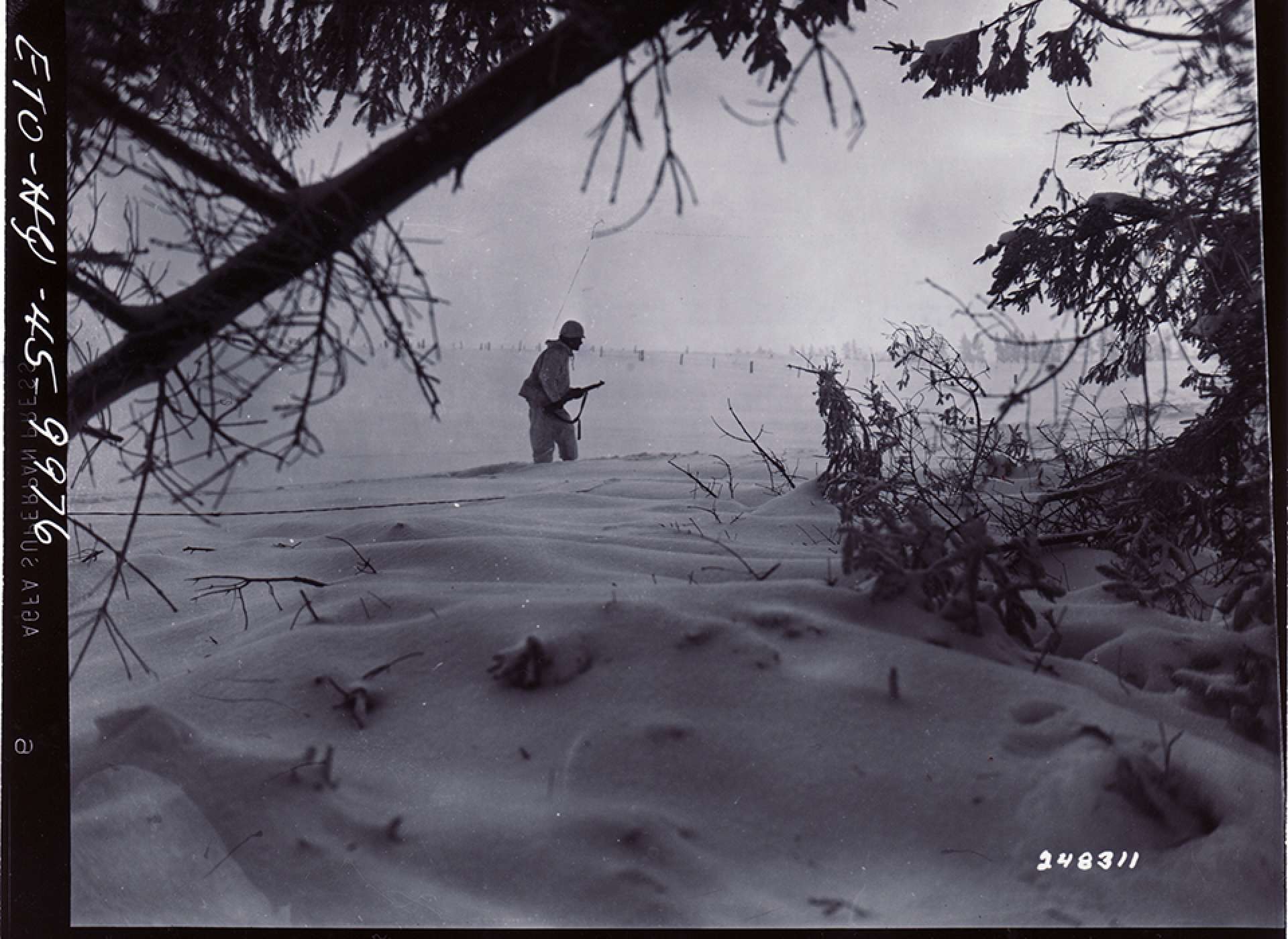
1st Infantry Division soldier on patrol near Bullingen, Belgium. The National WWII Museum Digital Collections.
In the early morning darkness, 2nd Division GI’s in Krinkelt could hear the unmistakable sounds of heavy armor. The lead elements of the 12th SS, who had punched into the town the night before, were pulling out of Krinkelt and moving towards the rear area. Thinking that the day had been won before it began, many of the GI’s holed up in and around Krinkelt breathed a sigh of relief. Their sighs of relief soon turned into fear as two full battalions of SS Panzergrenadiers, supported by a regiment of the 277th Volksgrenadiers and over 70 tanks roared straight at Krinkelt and the 38th Infantry Regiment of the 2nd Infantry Division.
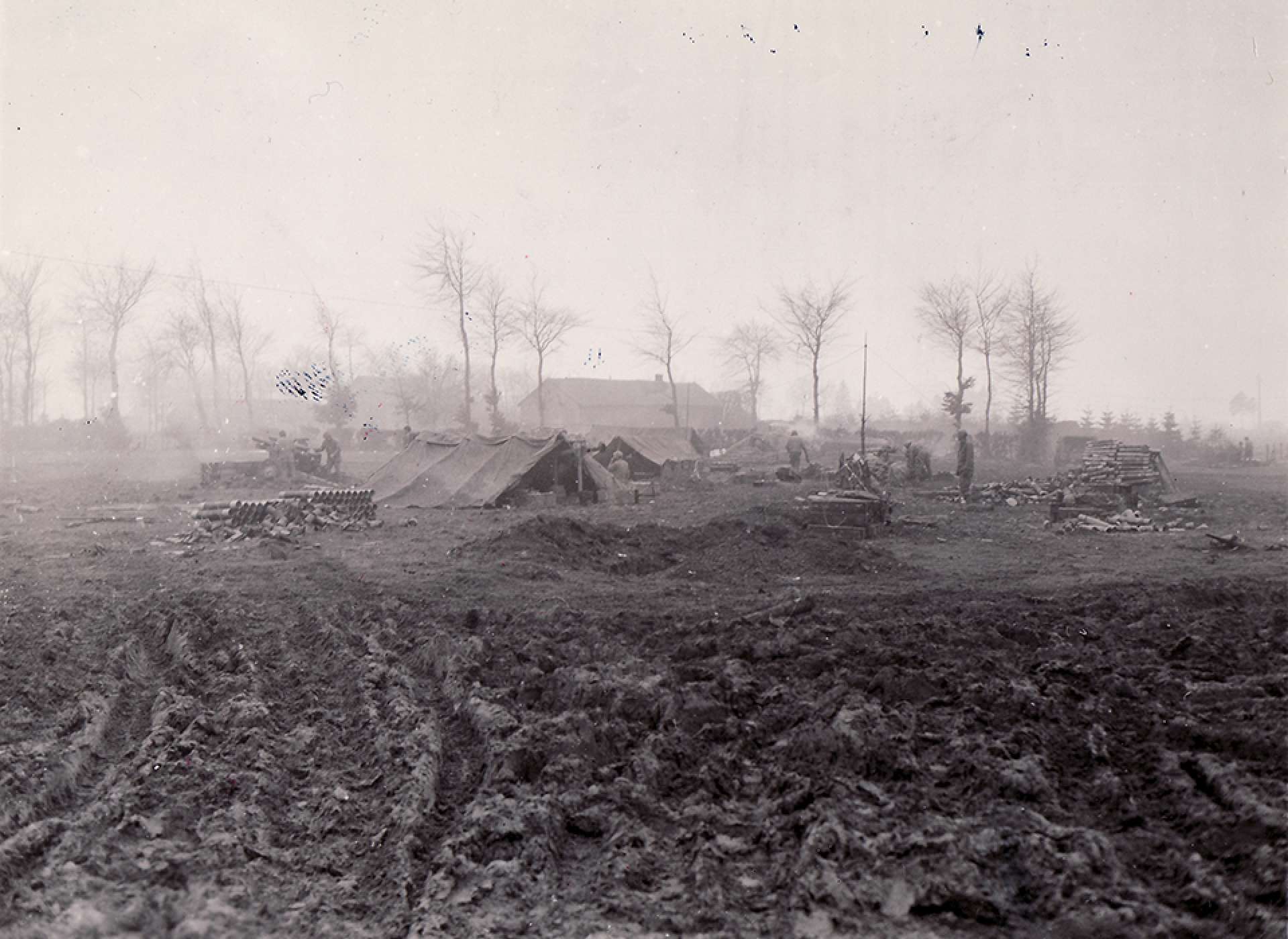
2nd Division howitzers firing toward German lines at Elsenborn (38th FA Btln). The National WWII Museum Digital Collections.
The battle for the town raged all day, American heavy artillery and Sherman tanks fired side and rear shots at the German armor accounting for many of their enemy. Yet despite the heavy losses, the 12th SS pushed on. The fighting in the town soon dissolved into vicious hand to hand action inside houses and in the streets. In some instances, American units occupied the top floor of a house while the Germans occupied the ground floor. Men shot at each other from houses across the street. American infantrymen jumped on top of the enormous Panthers and Jagdpanthers, as they rolled through the streets and killed the crews, with thermite grenades thrown into the turrets. Soldiers of each army grappled with knives and bayonets in the open streets as machine gun fire and mortars rained down around them. Survivors from both sides described the scene as something out of Dante’s Inferno.
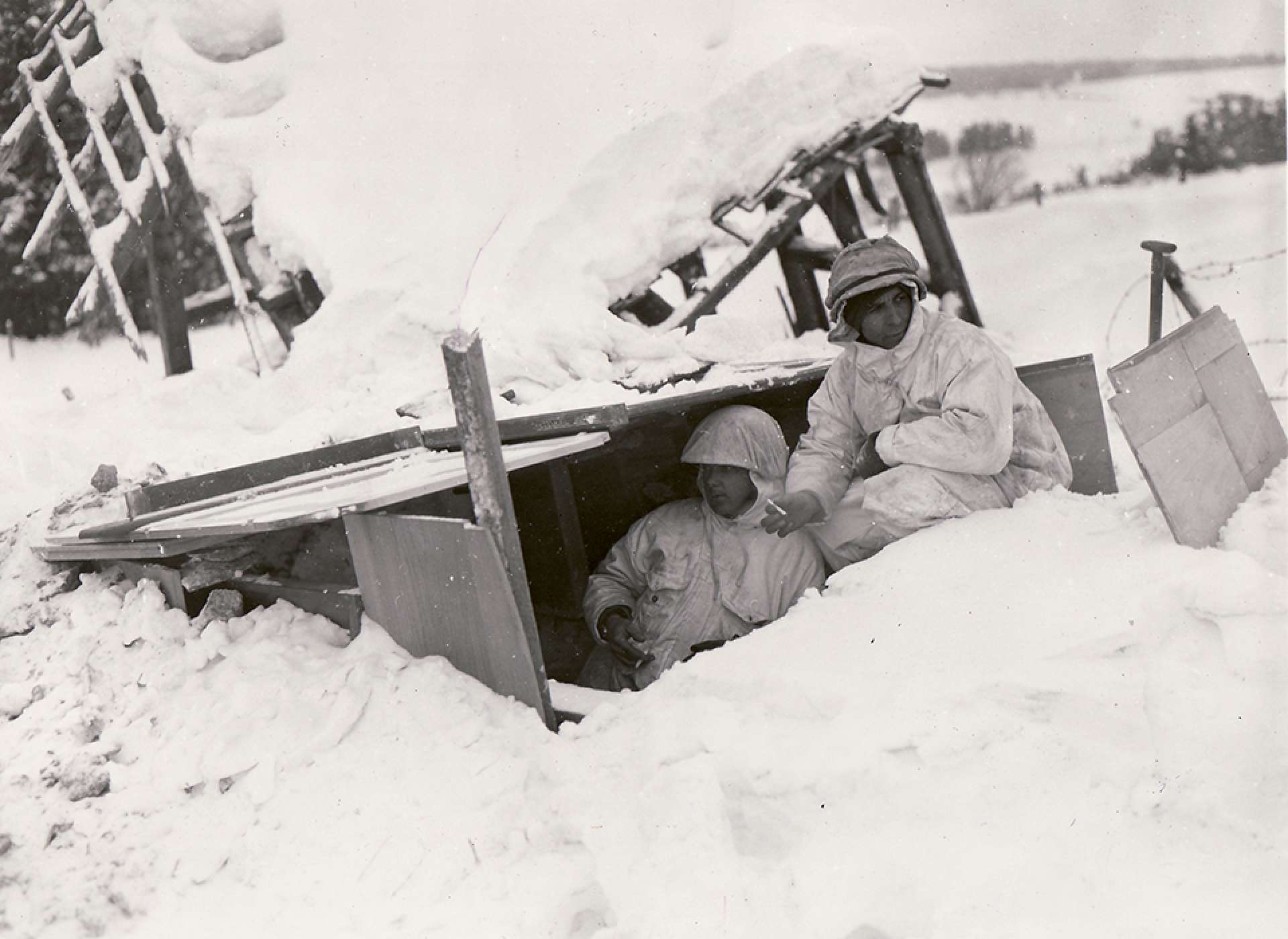
2nd Division, 9th Regiment soldiers in foxhole near Bullingen, Belgium. The National WWII Museum Digital Collections.
Despite the Americans' tenacity, it soon became painfully clear that the German onslaught was simply too much for one American regiment to fend off. Orders were received to break contact with the enemy and pull out of Krinkelt in any way possible, and reestablish positions on the boomerang shaped high ground north of Krinkelt, now named Elsenborn Ridge. As the fighting in Krinkelt ended, and the 2nd Infantry dug in on the ridge, the 1st Infantry Division’s 26th Regiment at Dom Butgenbach began to feel the wrath of the still-potent 12th SS.
Early on the morning of December 21, SS Panzergrenadiers, now supported by Nebelwerfers and heavy German artillery, slammed against the 26th’s defenses in and around Dom Butgenbach. The battle raged all day long and into the night, with the SS penetrating American lines repeatedly, only to be pushed back by American infantry, tank destroyers and artillery.
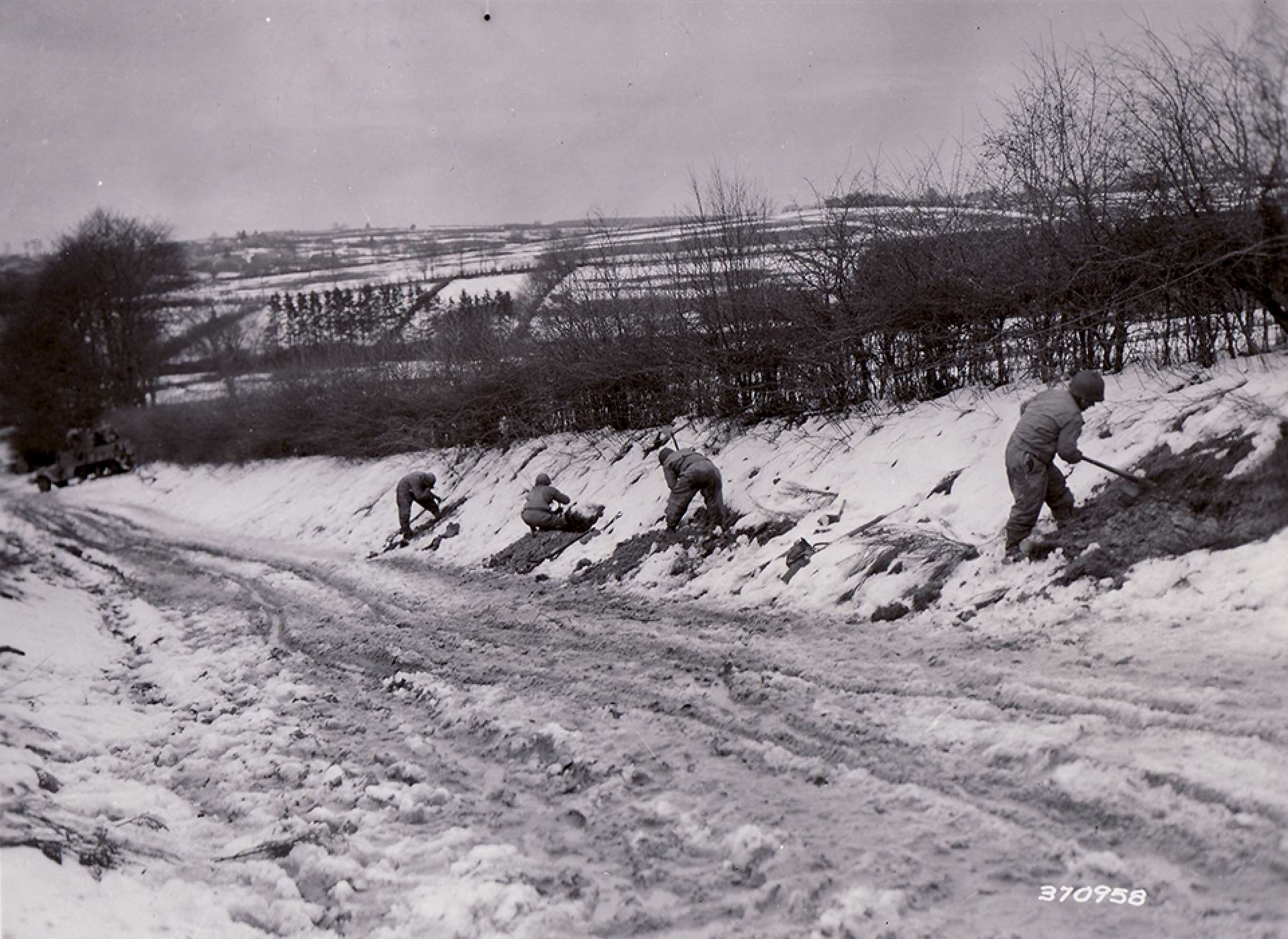
2nd Infantry Division soldiers dig in on a road bank and prepare defensive positions on the end of the Elsenborn Ridge on December 20, 1944. The National WWII Museum Digital Collections.
At the end of the day, the veterans of the 26th Infantry still held their ground, and looked out on a battlefield strewn with destroyed German armor and scores of enemy dead. The dead SS Panzergrenadiers, many of them as young as 15 and 16 years old, were described by American patrols to be “as common as grass.” American graves registration counted some 782 German dead in front of the 26th’s positions alone. The burnt-out hulks of 47 German tanks lay scattered about the landscape, some of the vehicles burned for days after the fight was over.
The following day, the 12th SS attacked the 26th Infantry again, this time with much less strength but in the same ferocious manner. Several German tanks made their way into the town, only to be knocked out by roving bazooka teams or American artillery. Many American survivors of the attacks made against Dom Butgenbach owed their lives to the divisional artillery of the “Big Red One.” The artillerymen supporting the riflemen on the line fired an astounding 10,000 rounds against the German attacks on the December 22 alone. Such was the ferocity of the artillery fire, that while several German tanks broke the lines, not a single Panzergrenadier managed to make his way close to the American defensive foxholes.
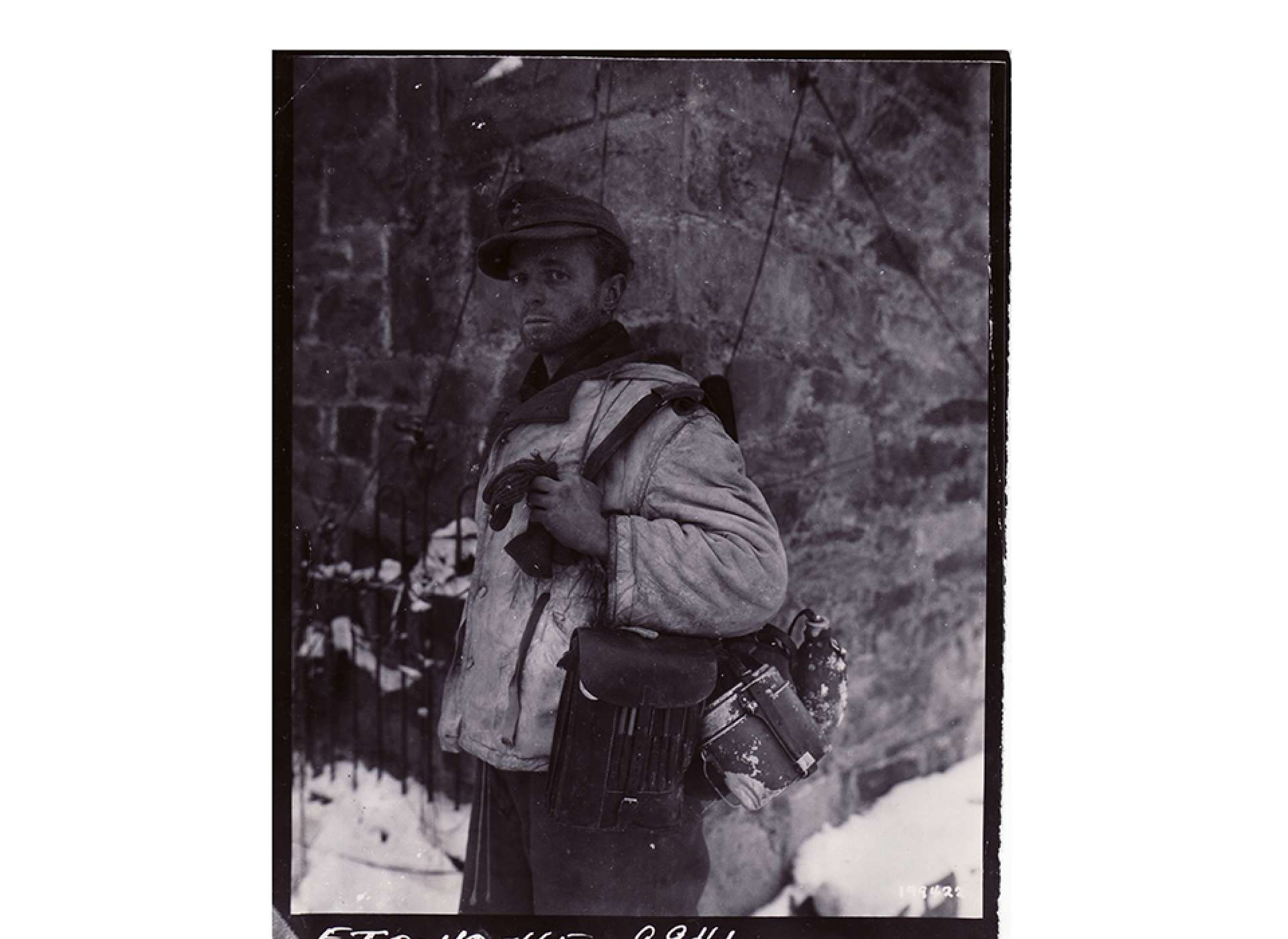
A German POW taken by the 1st Infantry Division near Butgenbach. The National WWII Museum Digital Collections.
As the 26th halted the German attack on Dom Butgenbach, the exhausted men of the 2nd Infantry Division (specifically the 38th Infantry Regiment and the remnants of the 99th Infantry Division, all of whom were entrenched on the high ground of Elsenborn Ridge), withstood vicious attacks from the fresh German 3rd Panzergrenadier Division. Pulled from the 6th Panzer Army reserve to help with the capture and elimination of what was now being called the “Northern Shoulder,” the fresh German troops faced the same fate as the elite SS units had before them. Massive concentrations of American artillery rained down on the attackers as they burst through the wood line and charged directly up the slopes of the ridge straight into American infantry positions. The Germans tried once more on December 26 with another fresh division, and this attack was also destroyed by the massed American artillery and small arms fire. No matter how determined the attacks, the Germans simply could not break through and push beyond Elsenborn Ridge and the surrounding territory.
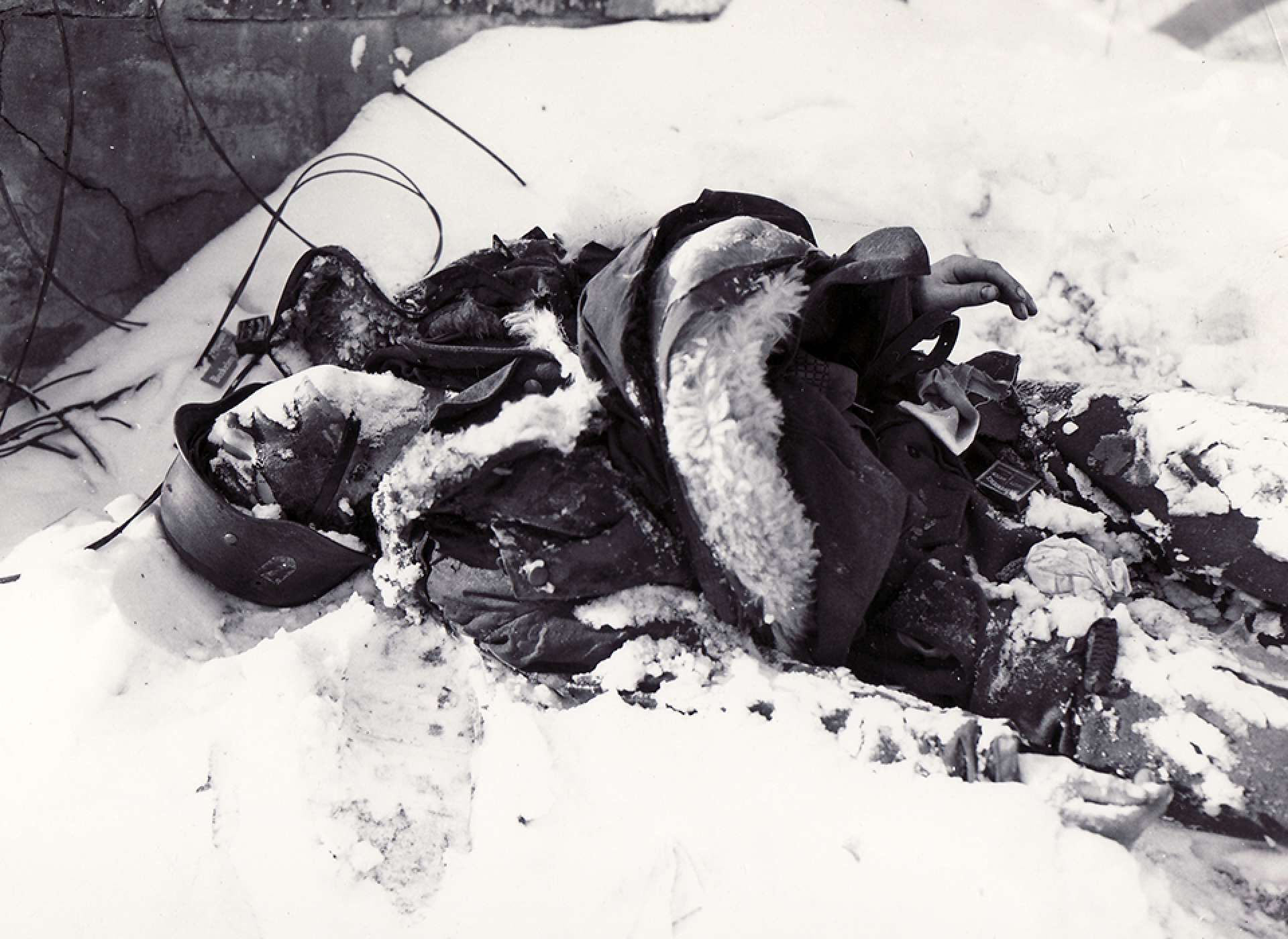
A Panzergrenadier of the Waffen SS lies buried in the snow following the fierce fighting near Elsenborn Ridge. The National WWII Museum Digital Collections.
The exhausted infantrymen of the 2nd and 99th Infantry Divisions that manned the frozen foxholes along the ridge passed stories about how the artillery that played such a large part in destroying their enemy were stacked wheel to wheel. The stories weren’t far from the truth. Over 300 heavy artillery pieces, 155mm, 105mm, 75mm, and 4.2 inch chemical mortars all backed the infantry along the ridge and those tucked in around Dom Butgenbach. There was simply no way that anything could, or ever would, penetrate the ring of steel formed by the American infantry and their supporting artillery. Any future attack would be doomed to fail as the others had before.
As it turned out, there would be no further German attacks against the ridge or Dom Butgenbach after December 26. The Germans had simply worn themselves out against the meat grinder that was the 1st, 2nd, and the remnants of the 99th Infantry Divisions. By denying the Germans Elsenborn Ridge and the surrounding territory, the American divisions had successfully blocked the main thrust of Hitler’s last offensive on the western front. With the exception of Kampfgruppe Peiper, south of the positions around Elsenborn, the German assault against the “Northern Shoulder” penetrated no further than six miles past the German border. Such was the failure of the 12th SS and its accompanying Volksgrenadier divisions that the main thrust for the rest of the offensive was shifted to the south, aimed towards the area of Bastogne.
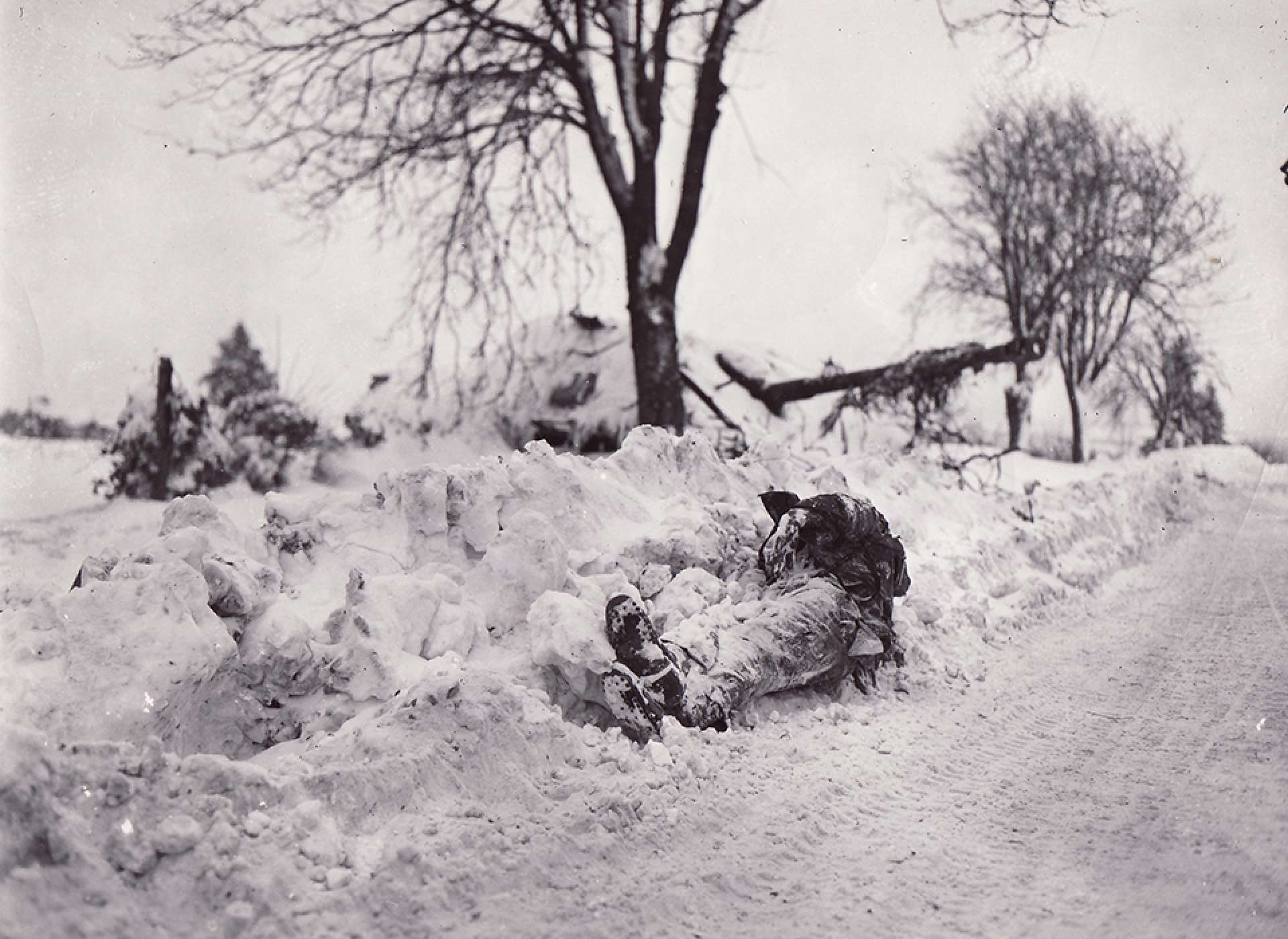
The body of a German tanker with a destroyed tank in background near Bullingen, Belgium—taken with 9th Inf. Regt, 2nd Division. The National WWII Museum Digital Collections.
The cost of success was high for the 2nd Infantry Division. The veteran division counted more than 1,000 men killed or missing from the ranks. The vast majority of those missing would later be presumed to have been killed in action. The 99th suffered more, specifically those units in the way of Kampfgruppe Peiper. Casualties from the 99th were well over 3,000 men. When the supporting units were added to the bill, the cost in American lives to defend the “Northern Shoulder” around Elsenborn was just over 5,000 lives.
The American defense of the Elsenborn region threw the Germans' precious timetable for their assault into complete disarray. Pre-planned routes of advance were denied or destroyed, German units became disorganized and strung out along miles of Belgian roads and fresh German divisions, such as the fanatical 12th SS Panzer Division, simply ceased to exist as fighting units. Because of the actions of American infantry, artillery and armor the northern flank of the German assault was never secured. The enemy would never be able to acquire the roads, bridges, and routes they needed for their success. Ultimate American victory in what would be known as the Battle of the Bulge was made possible by the actions of those in the north.
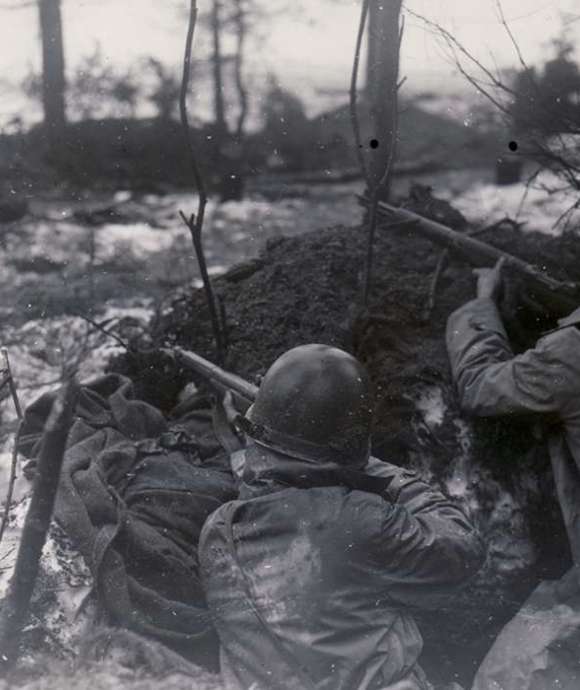
The Battles for Elsenborn Ridge Part I
The real crusher to the German offensive plans in the Ardennes occurred 46 miles north east of Bastogne, in a small area consisting of a copse of small villages and a piece of high ground called Elsenborn Ridge.
Seth Paridon
Seth Paridon was a staff historian at The National WWII Museum from 2005 to 2020. He began his career conducting oral histories and research for HBO’s miniseries The Pacific and holds the distinction of being the first historian hired by the Museum’s Research Department. In the 12 years he was Manager of Research Services, Seth and his team increased the oral history collection from 25 to nearly 5,000 oral histories.
Cite this article:
MLA Citation:
APA Citation:
Chicago Style Citation:
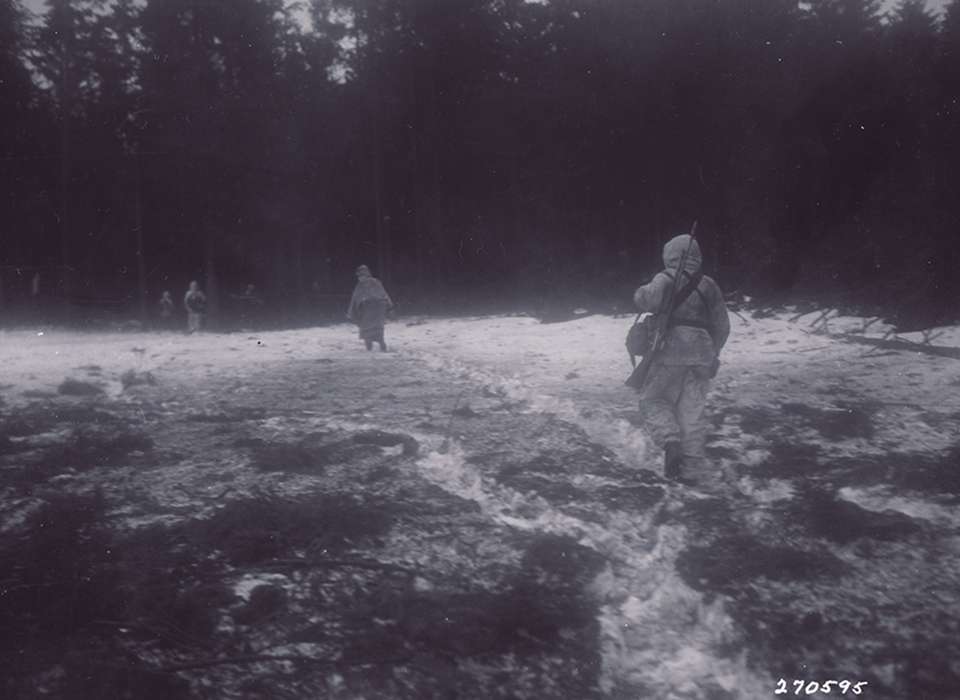


![Max Fuchs, New York City cantor, sings as Rabbi Sydney [sic] Lefkowitz, Richmond, VA, conducts the first Jewish services from Germany.](/sites/default/files/styles/max_650x650/public/2025-10/image1.jpg)






